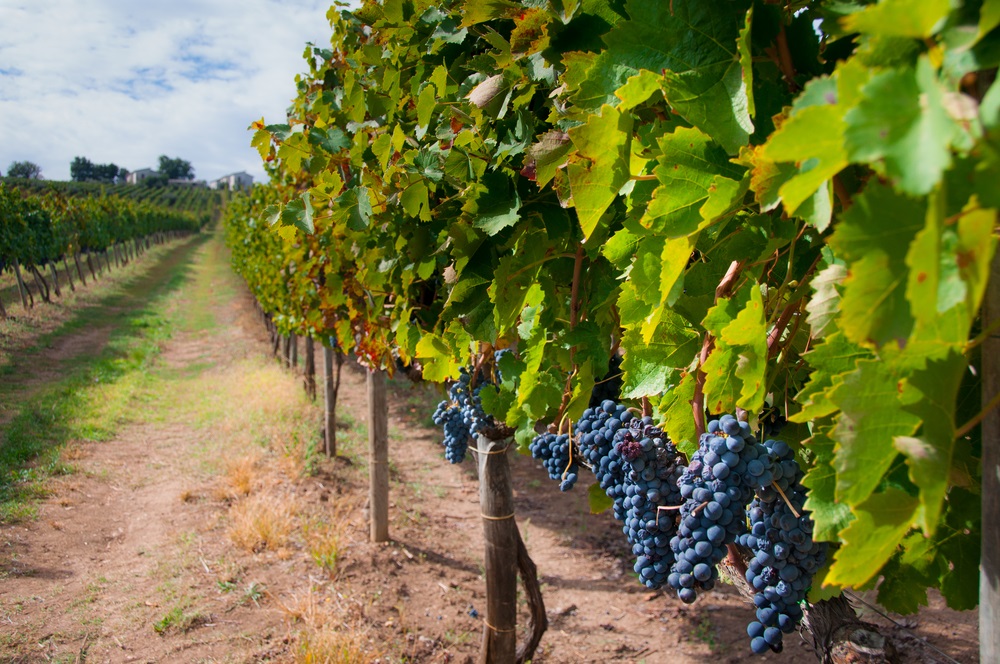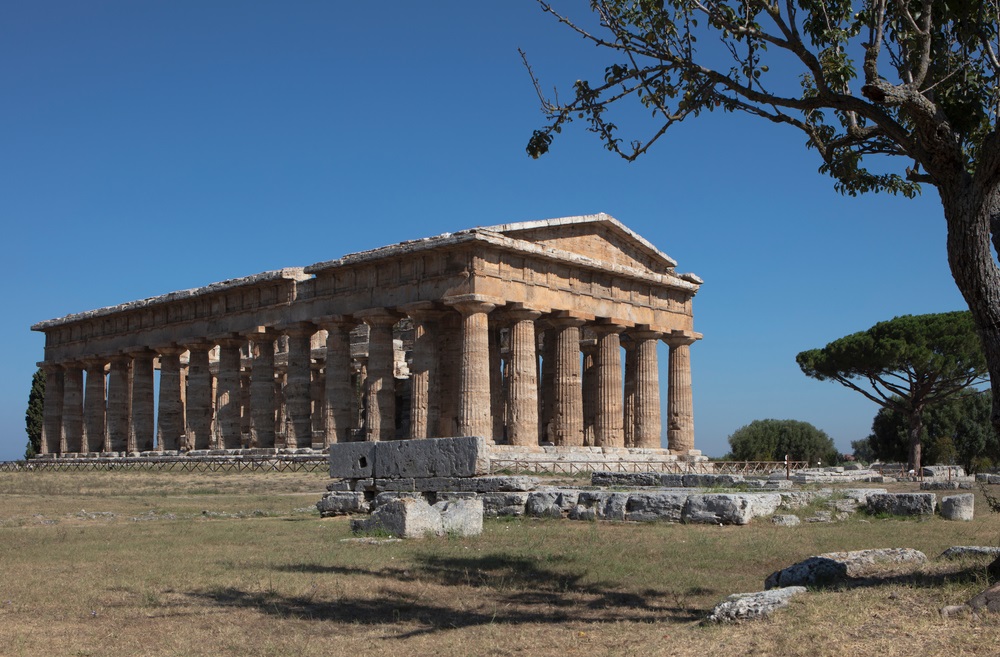
Primitivo Grape Variety: An Introduction to Puglia’s Mythical Grape
December 18, 2020
Discover Puglia's wine transformation: from bulk blending to exceptional quality, with a focus on Primitivo in the heart of Italy's 'heel'.
By: James lawrence / Last updated: February 5, 2025
Estimated reading time: 9 minutes
Italy has a thousand distinct red grape varieties, each adapted to a niche in the country’s incredibly diverse landscape. Sadly, many of these wonders remained local curiosities throughout the 20th century, consigned to local palates and cuisine. Few US and Northern European connoisseurs heard of Nerello Mascalese or Greco di Tufo, much less experienced a drop.

Guide to Italian Red Wine: Read more
However, several tectonic movements in Italian wine culture have multiplied our choices tenfold and tripled the space needed on New York, London, and Hong Kong wine lists. As consumers began to demand a wider variety of flavors and grape varieties in the late 1990s, importers and merchants looked beyond Barolo, Chianti, and Brunello di Montalcino. Formerly neglected regions like Campania, Puglia, and Basilicata became the focus of massive domestic and global investment. Pioneers such as Antonio Mastroberardino have worked extraordinarily hard in improving the quality and reputation of southern Italian viticulture while increasing competition from the New World has forced growers to dramatically up their game. Quality, not quantity, has become the Italian watchword.
The Aglianico [pronunication: alli-yawn-nico] grape has been one of the greatest beneficiaries of this wine renaissance. Powerful, tannic, dark, and brooding, it has been called the “Barolo of the South” by critics and winemakers. Fifty years ago, the grape was often poorly handled in the vineyard and bastardized in the fermenter.
However, in the 1970s, the Mastroberardino family started to revive its fortunes, lowering yields and experimenting with maturation in new French oak. They helped revitalize Aglianico’s image and promoted the grape as Campania’s signature red wine style. Their success attracted other investors, most notably the D’Angelo family, while a growing firmament of winegrowers decided to go it alone and bottle their own wines. This surge in both production and quality, combined with proselytizing from critics like Jancis Robinson MW, has helped popularize Aglianico abroad. Although it will never rival the international fame of Pinot Noir, this magnificent red grape is starting to win over consumers further afield.
Aglianico’s charms are numerous: It responds to its terroir (above all volcanic soils) with razor-sharp precision; the grape maintains fresh acidity even at high levels of alcohol, and its formidable tannins allow Aglianico to age into glorious complexity. And yet, many of the best wines are available for under 30 euros, so Aglianico’s price-to-quality ratio may well be unsurpassed.

The grape’s origins have been the subject of a passionate and longstanding debate. Many viticulturists believe that Aglianico is of Greek origin – an import that coincided with their conquest of southern Italy in the 8th century BC. This would make sense, as the Greeks popularized wine-growing across Mediterranean Europe during the period. However, modern DNA analyses have cast doubt on this widely accepted theory. Advanced genetic sequencing techniques have proven that Aglianico has no direct parentage in Greek grape varieties, although it could be a mutation from an original variety planted during the conquest. Others argue that the Spanish invasion of Italy in the 1400s was responsible for transplanting Aglianico into Italian soil. As it stands today, its true origins remain a mystery.
Yet, there is much that we do understand about this sophisticated variety. Aglianico seems to have been custom ‘made’ to thrive in a hot Mediterranean climate. The grape buds early, ensuring that only regions with warm(ish) spring weather can successfully grow Aglianico; spring frost is a major viticultural hazard in much of France and northern Italy, capable of wiping out an entire harvest overnight.
Conversely, Aglianico is a very late-ripening variety, requiring dry autumn conditions to ripen its very hefty tannins. If the grape is picked before full phenolic ripeness occurs, even the most talented winemaker will struggle to coax finesse out of this powerfully structured variety. This is Aglianico’s greatest strength and weakness: naturally, high levels of firm tannin can preclude early drinking; however, this quality allows Aglianico to age into velvety maturity. Nevertheless, the grape is not easy to cultivate, prone to high yields and several grapevine diseases and maladies, most noticeably Peronospora and the fungal infection Botrytis Cinerea.
Today it is widely acknowledged that Aglianico responds exceptionally well to igneous soils (solidified rock formed from lava or magma), producing aromatic and structured wines with a strong mineral core of dark fruit. But, of course, there has never been a consensus on whether grape varieties can ‘transmit’ the specific characteristics of their respective terroirs. Some argue it’s all marketing nonsense; wines grown on gravel don’t taste gravel, and wines grown on clay don’t taste of clay, etc. Yet if you taste Aglianico grown on volcanic soils, there is a discernible mineral quality that seems to have been taken from the bowels of the earth.

Many would argue that Aglianico reaches an apogee in the Mediterranean-facing vineyards of Campania, particularly in the appellation of Taurasi. Awarded DOCG (Denominazione di Origine Controllata e Garantita) status in 1993, approximately 42,000 hectares are under vine. The vines are planted on volcanic and clay soils, the former a direct descendant of the volcano of Pompeii, which famously erupted in AD 79. The zone is situated to the east of Naples, in the high-altitude hills of Avellino province that flank the town of the same name.
The topography of the appellation is spectacular. Split in two by the Calore River, the zone is characterized by pretty hilltop villages and an undulating landscape. In the northern section of the zone, the terroir is given over to cooler clay soils, planted at altitudes of between 300-400 meters above sea level. This tends to produce riper, softer wines than the vineyards in the south, cultivated on volcanic terroir at an elevation of up to 700 meters. According to the DOCG framework, Taurasi reds must contain a minimum of 85 percent Aglianico, aged for three years before release (one year in wood). Riserva versions are aged for an additional year before they’re brought to market. As a result, it is not uncommon to encounter 100% Aglianico Taurasi, albeit a few growers like to blend in small amounts of Sangiovese or Barbera.
The best examples from the region are undoubtedly among the finest reds being made in Italy today. In their youth, they are undeniably stuffed full of firm tannin – prolonged aeration is of enormous benefit to the vast majority of Taurasi wine, particularly in its formative stages. A young vintage typically offers black fruits, leather, earth, and white pepper aromas. The most intoxicating tertiary flavors of tobacco, dried figs, mocha, and raw meat will emerge with extended bottle age. Above all else, Aglianico’s natural opulence should be wrapped in a balancing act, supported by fine acidity and ripe tannins. The top wines will always take at least 5-8 years to show their full hand.
That said, Italian winemakers increasingly realize that contemporary oenophiles are not necessarily patient consumers. Modern vinification techniques, combined with a lavish dose of new French barrique, can produce a relatively approachable wine from a young age. Instead of an earthy palate supported by savory tannin, you’ll discover a lush texture and jammy flavors of stewed red fruit and white chocolate. Such wines have their place, although there is arguably a bland ubiquity to modern styles of Aglianico – neither do they rival the longevity of the classical styles. We’re firmly on the side of the traditionalists.
Aglianico del Vulture is Taurasi’s closest rival. The DOC appellation was created in 1971, encompassing over 340 hectares of vineyards planted on the cool slopes of an extinct volcano in the region of Basilicata. As with Taurasi, the best sites are located on the higher slopes (between 500-750m), cultivated on mineral-rich volcanic soils that offer excellent drainage and retain adequate water. The wines of Aglianico del Vulture are less famous than the vintages produced by their Campanian neighbors and consequently often represent better value. They tend to mature fast while offering an accessible texture and mouth-coating chocolate and sour cherry flavors.
However, top-end Aglianico del Vulture is no poor relation to Taurasi. In addition, there is an elevated DOCG tier of Aglianico del Vulture Superiore, introduced in 2011; the wines must have a minimum alcohol level of 13.5%, aged for at least three years before commercial release, to qualify for DOCG status. A small amount of Aglianico is cultivated in the little-known region of Molise, on the border with Campania and Puglia. The best terroirs (often in close proximity to the Adriatic) yield wines that merge the lush concentration of Aglianico del Vulture with the class and freshness inherent to Taurasi.
So it will come as no surprise that Aglianico really shines at the dinner table. Its (generally) firm tannic structure, fresh acidity, and ripe opulence are seldom outclassed by even the most strongly flavored and seasoned dishes. A frequent complaint among lovers of charcoal-seared meat is that the smoky flavor overwhelms even the most robust and full-bodied wines. Not so Aglianico: the grape’s powerful tannins form a delicious bond with seared and lightly burnt BBQ fat. Beef brisket, seared prime rib, venison, roast pork belly, and pan-fried steaks work tremendously well. Hard cheeses are another favorite – especially Parmesan, Pecorino, and Cheddar.
Indeed, there is much to love about Aglianico and little to dislike. The beguiling flavor profile of a 15-year-old vintage of Taurasi always creates a stunned silence. And yet, critics and sommeliers will tell you that Aglianico’s authenticity elevates the grape above its peers. What makes a wine authentic continues to divide opinion, but terroir expression is something that every member of the wine trade can get behind. If the same winemaker produces an Aglianico wine from Campania and Basilicata, they will taste remarkably different. This is terroir at its truest: where it makes a difference in the glass. Aglianico is living proof that the concept of a “sense of place” isn’t just promotional mumbo jumbo. It’s the bedrock of all great wine.
If you would like us to customize an exclusive luxury tour, contact us and let us know your travel plans. We offer luxury food and wine tours for private groups of a minimum two guests. In addition, all of our private, chauffeured tours are available year-round upon request.

